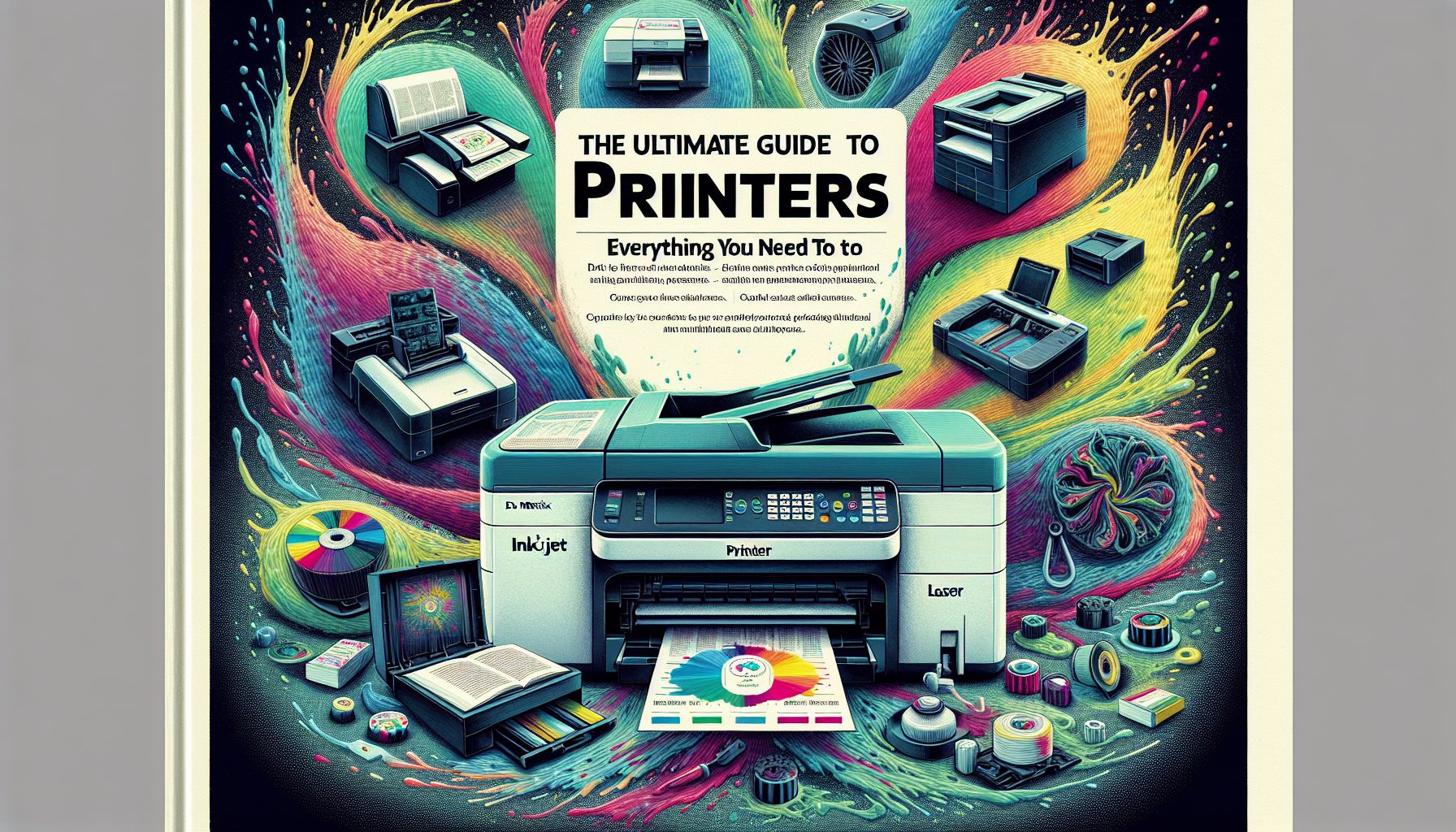Printers have become an essential tool in both homes and offices, allowing us to quickly and easily produce physical copies of documents, photos, and more. With a wide variety of options available on the market, it can be overwhelming to choose the right printer for your needs. In this ultimate guide to printers, we will cover everything you need to know about printers, including the different types, key features to consider, and tips for maintenance and troubleshooting.
Types of Printers
There are several types of printers available, each with its own set of features and benefits. The most common types of printers include:
1. Inkjet Printers
Inkjet printers are a popular choice for home users due to their affordability and versatility. These printers use liquid ink cartridges to produce high-quality prints of photos and documents. Inkjet printers are ideal for printing in color and are often compact in size, making them suitable for limited spaces.
2. Laser Printers
Laser printers use toner cartridges and a laser beam to produce fast and high-quality prints. These printers are typically more expensive upfront but are more cost-effective in the long run, as toner cartridges last longer than ink cartridges. Laser printers are ideal for high-volume printing in office settings.
3. All-in-One Printers
All-in-one printers, also known as multifunction printers, combine the functions of a printer, scanner, copier, and sometimes fax machine into one device. These printers are versatile and convenient, making them a popular choice for both home and office use. All-in-one printers are available in inkjet and laser options.
4. Photo Printers
Photo printers are designed specifically for printing high-quality photos. These printers use specialized ink and paper to produce vibrant, professional-quality prints. Photo printers are a great choice for photographers or anyone looking to print their own photos at home.
Key Features to Consider
When choosing a printer, there are several key features to consider to ensure you select the right device for your needs. Some important features to keep in mind include:
1. Print Speed
Print speed refers to the number of pages a printer can produce per minute. If you have high-volume printing needs, look for a printer with a faster print speed to increase efficiency.
2. Print Quality
Print quality is measured in dots per inch (dpi) and determines the sharpness and clarity of prints. For crisp text and vibrant images, opt for a printer with a higher dpi.
3. Connectivity Options
Consider the connectivity options available on a printer, such as USB, Wi-Fi, Ethernet, and Bluetooth. Wireless connectivity allows you to print from multiple devices without the need for cables.
4. Paper Handling
Different printers have varying paper handling capacities, including the size and type of paper they can accommodate. Be sure to choose a printer that can handle the paper sizes and types you commonly use.
5. Cost of Consumables
When selecting a printer, consider the cost of consumables such as ink or toner cartridges and paper. Some printers may have lower upfront costs but higher ongoing expenses for replacement supplies.
Maintenance and Troubleshooting Tips
To keep your printer running smoothly and prolong its lifespan, it’s important to perform regular maintenance and address any issues promptly. Some maintenance tips to keep in mind include:
- Clean the printer regularly to remove dust and debris that can clog the printhead or paper feed.
- Use high-quality paper and ink or toner cartridges to prevent print quality issues.
- Update the printer drivers and firmware to ensure optimal performance and compatibility with your devices.
If you encounter any issues with your printer, such as paper jams, streaks on prints, or connectivity problems, try the following troubleshooting tips:
- Clear any paper jams by following the printer’s manual or online guides.
- Clean the printhead or toner cartridges to remove any buildup or residue.
- Check the printer’s connectivity settings and ensure it is properly connected to your network or device.
By following these maintenance and troubleshooting tips, you can keep your printer in top condition and avoid unnecessary downtime or repairs.
Conclusion
Printers are a valuable tool for producing physical copies of documents, photos, and more in both home and office settings. With a variety of printer types and features available, it’s important to consider your printing needs and preferences when selecting a printer. By understanding the different types of printers, key features to consider, and maintenance and troubleshooting tips, you can make an informed decision and ensure your printer operates efficiently for years to come. Whether you choose an inkjet, laser, all-in-one, or photo printer, the right device can enhance your productivity and creativity in printing.


